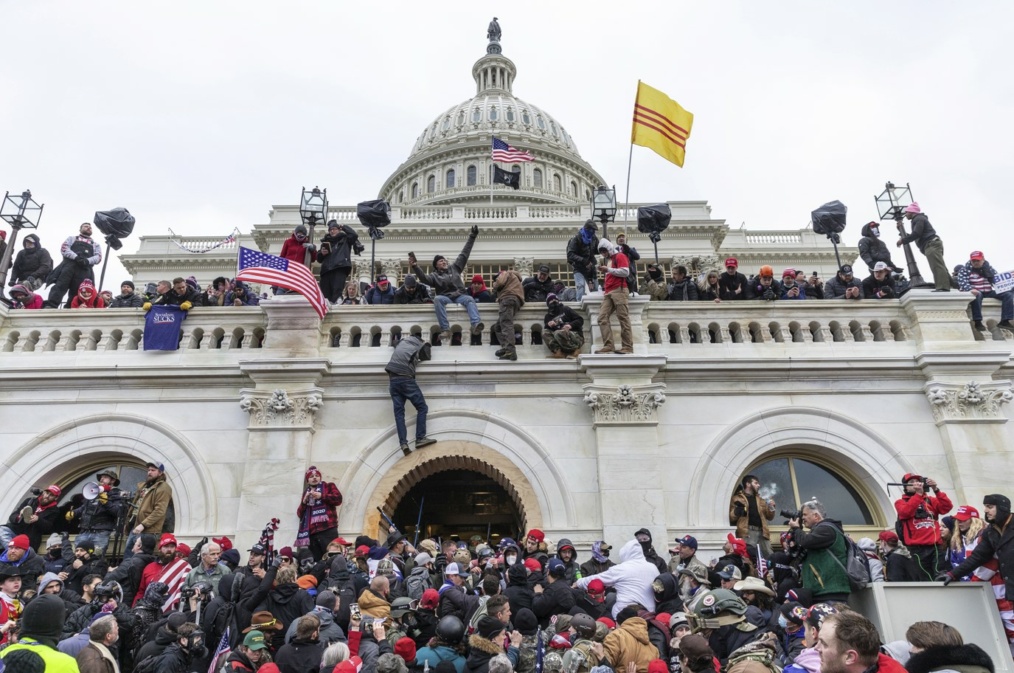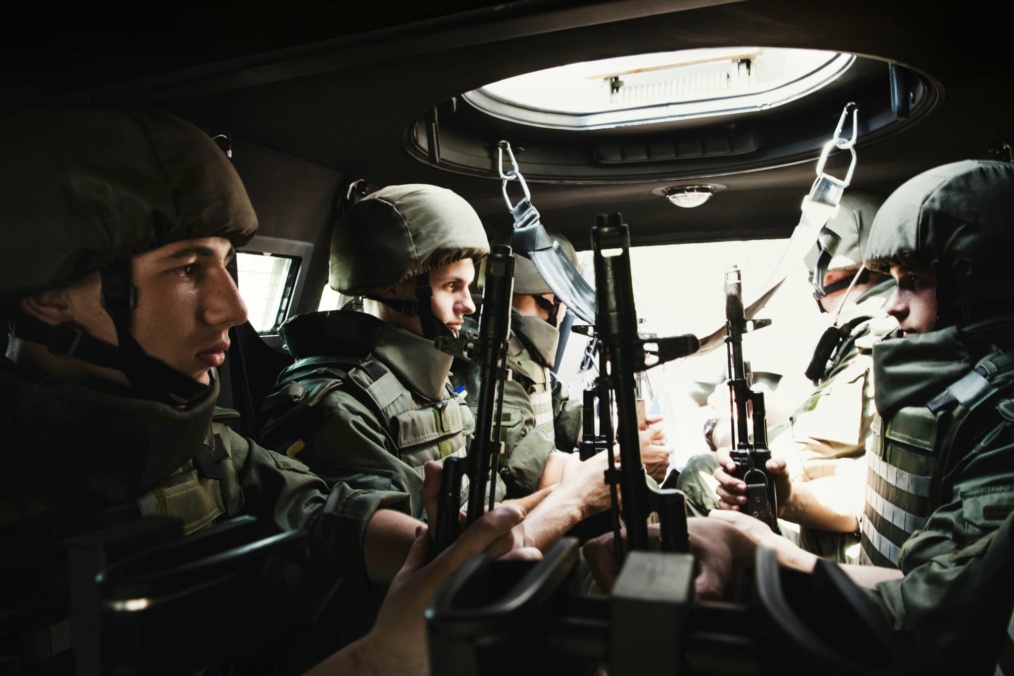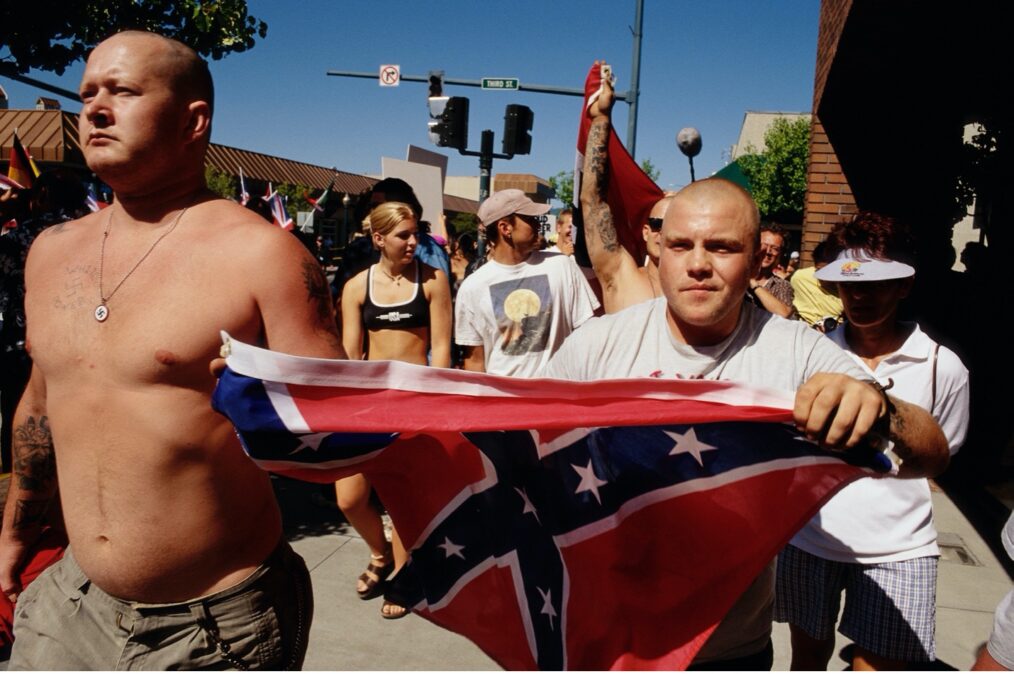On Monday, June 6, 2022, Proud Boys leaders Henry “Enrique” Tarrio (38), Ethan Nordean (31), Joseph Biggs (38), Zachary Rehl (37), and Dominic Pezzola (44) were charged with seditious conspiracy along with other charges for their actions leading up to and during the January 6th attack on the U.S. Capitol. The Proud Boys have been active since 2016 and were labeled as a hate group by the Southern Poverty Law Center. The Proud Boys often identify themselves by wearing black and yellow polo shirts with logos and slogans.
Profile of the Proud Boys
Far-right American-Canadian commentator Gavin McInnes founded the Proud Boys in New York City in 2016. McInnes claimed it to be a fraternal drinking club and its existence was argued as necessary due to the inability for society to let men be proud of Western culture. McInnes has also endorsed the “Great Replacement” conspiracy theory, which argues that white populations are being purposely displaced by people of color, particularly immigrants in Western countries. He carved out a specific ideological space for frustrated men to claim that Western Culture is superior to all others, racism is a myth formed by guilty white liberals, Islam is a culture of violence, and feminism “is about de-masculizing men.”
Current leader Enrique Tarrio was appointed in November 2018 and has admitted that the Proud Boys attract those with white supremacist views.
The Proud Boys have described themselves as a pro-Western fraternal organization for men who refuse to apologize for creating the modern world; also known as Western Chauvinists. Though they officially reject racism and tout the multiracial backgrounds of some of their members, they hold the belief that Western European culture is superior to all others. The Proud Boys show up to events and protests and are sometimes used as private security, looking for any reason to incite violence.
Dangerous Narratives
“Western Chauvinism” can be interpreted as a thinly veiled code for white supremacy and patriarchal misogyny. It is often employed to make the motives of the Proud Boys appear more palatable to mainstream audiences and deflect any charges of racism. Using coded language such as substituting “Western Civilization” for the racial category of whiteness gives a wink and a nod to white supremacy while having the ability to maintain some degree of plausible deniability that they are a racist group.
The Proud Boys have also glorified the use of violence to achieve their goals. They have a history of inciting, supporting, and praising violence under the guise of self-defense. Proud Boys often declare, “we don’t start fights, we finish them.”
Ethan Nordean gained prominence within the Proud Boys due to a video depicting him fending off a baton from a counter-protester and then flattening his assailant. Nordean earned the accolade “Proud Boy of the Week” in the Proud Boys magazine. In an interview with conspiracy website Infowars’ Alex Jones questioning Nordean about the incident, Nordrean responded, “like Gavin McInnes says, violence isn’t great, but justified violence is amazing.”
The Proud Boys also advocate for “traditional” gender roles. One of the beliefs is to “venerate the housewife.” They glorify the traditional notions of womanhood while denigrating women who do not fit into those notions. The Proud Boys may claim they support the choice of some women being “housewives,” however, the reality is that they perceive women the same way as white supremacists and elements of the online manosphere do. Women are perceived as under-deserving of the same status as men, worthy of ridicule for deviating from traditional gender roles, objectifiable in some instances to serve men, and worthy of protection in others as long as they fulfill antiquated roles in the service of preserving “Western” society.
These narratives are dangerous as they help the Proud Boys’ beliefs be more palatable to a broader audience. The Proud Boys consistently attempt to present themselves as “patriots” and defenders of “conservative” values by being able to sidestep any branding of having an extremist label.
Initiation
Four “rituals” must be performed to gain membership and rank. This hierarchical system promotes adherence to the Proud Boys´ identity and is a focal point for the radicalization of violence within the group.
First, to be initiated, the individual must publicly declare his desire to be a Proud Boy and Western Chauvinist. They must repeat the phrase “I’m a Proud Boy. I’m a Western chauvinist. I refuse to apologize for creating the modern world.” This is meant to instill pride in the Proud Boys and Western culture.
For the individual to ascend to the second rank, they must submit to a ritualistic assault from at least five other members. Five members encircle the initiate and continuously punch them. This will only end when the initiate names five different types of breakfast cereals. Should the initiate succeed, they can become an official member. According to McInnes, this ritual is meant to weed out initiates deemed unfit and to mentally harden members in preparation for future fights.
Rank three is achieved by tattooing “Proud Boy” on their body. The final rank is achieved by the initiate intentionally engaging in violence on behalf of the Proud Boys. The journey to the final rank diminishes all initiates’ natural ability to have empathy towards others, instead replacing it with the belief that violence is the only solution to effecting political change.
The initiation process demonstrates how political violence is an inherent characteristic to the identity of the Proud Boys. Each step to reach the final rank is associated with socio-political views that justify the need for physical defense against degenerate forces. The initiation phases serve as a pro-social radicalization mechanism that justifies the need for commitment to increase, willingness, and the necessity of members to integrate the Proud Boys into their identity and the use of violence against those perceived as adversaries.
Organization and Operations
The goals of the Proud Boys’ engagement style appear to be designed to draw media attention, frame media perception, generate recruitment, manifest narratives, initiate members into higher ranks, and ensure their beliefs are perceived as palatable to the American political discourse.
All across the U.S., the Proud Boys are organized into local chapters that operate on a semi-autonomous level. The relationship between the national leadership and local chapters is depicted as dynamic and decentralized. This gives members latitude in determining the activities of their local factions, which can facilitate the creation of offshoot or splinter groups. In more recent years, the level of involvement from national leadership in local chapters’ jurisdictions has depended on the location and focal point of a certain campaign or activity.
The three most active regions are the Pacific Northwest, Miami, and New York. These focal points for the most activity involve street fighting and political activism. With the lack of oversight and individual chapter autonomy, members have experienced varying degrees of radicalization and commitment to violence.
Members operate under the belief that “The West is the Best.” They welcome non-white members as long as these members acknowledge that Western civilization is superior to all others. By sidestepping the question of race, they can make their proto-fascist appeal in the language of patriotic individualism: pro-America, pro-capitalism, and pro-Trump, allowing access into the Republican mainstream.
One strategy to legitimize their relationship with Republican politicians and Republican mainstream politics, is to have photos taken of Proud Boys members with Republican actors. Proud Boys members have been seen in photos with Donald Trump Jr., U.S. Senator Ted Cruz, former-Florida Governor Rick Scott, and U.S. Representatives Mario Diaz-Balart and Devin Nunes. Additionally, Senator Ted Cruz supported a non-binding resolution to define anti-fascist activists as domestic terrorists after Proud Boys leader Enrique Tarrio launched a petition in favor of the bill.
Memes and jokes are made to make light of the hateful beliefs of their members or try to brush off these jokes as pushing boundaries and that those who criticize their beliefs and comments “just don’t get it.” Far-right extremists often use irony as a cover to communicate their beliefs without having to face any real and legitimate consequences.
Typically wherever the Proud Boys are present, violence ensues. Their offline tactics have shown a pattern of staging multiple rallies in different cities to maintain the illusion of a larger presence. Their tactical engagements rely on physical intimidation and brawling to assert their political agendas.
Protesting is also a key component of their overall strategy of gathering more supporters. Six months after the January 6th attack, their attention shifted to the local level. “I’ve always said my goal for this year was simple,” Tarrio said; “start getting more involved in local politics, running our guys for office from local seats, whether it’s a simple GOP seat or a city council seat.”
The Proud Boys have appeared at small-town council gatherings and school board presentations with the intention of bringing their brand of intimidating politics to the local level. At some meetings, they threaten local community leaders, while at others, they stand silently and menacingly, watching the events.
Why the Seditious Conspiracy Charges Matter
A study conducted by Leonard Burstyn of the University of Chicago found that the concept of Trumpism has not created more racists in the U.S., but rather emboldened those with extremist views to feel more comfortable expressing those views in public.
It is important these prosecutions surrounding the January 6th attack go forward, since the Proud Boys have engaged in violent street activity without any real legal consequences for years. Accountability needs to be demonstrated as more Americans may be inclined to believe that violence is the only way to accept and express their political differences. When beliefs such as those of the Proud Boys become more accepted into the mainstream, it becomes harder to monitor and prevent domestic violence, as there is a larger set of diffuse actors. This can already be observed with the recent shooting in Buffalo.
Camille Amberger, Counter-Terrorism Research Fellow




